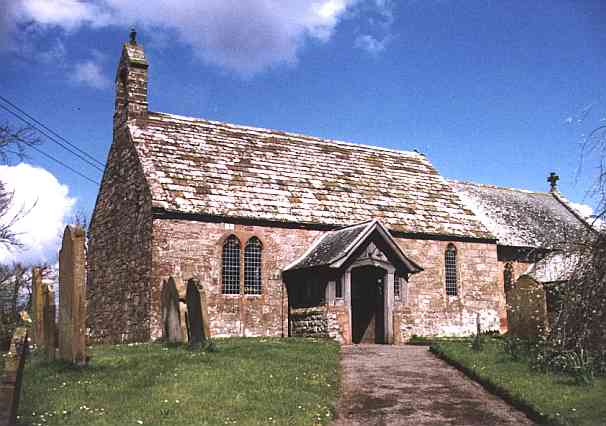 Kirkbride village is situated on the south side of the estuary of
the Wampool, 6 miles N. by W. of Wigton. The church, which stands on an acclivity a
little east of the village, was founded before the Conquest, and dedicated in honor of an
Irish religieuse, of great sanctity, called St. Brydoch, or Bridget,
"and corruptly, St. Bride." It is a small edifice, built on the site, and
probably with the materials from the old Roman fort or station which stood here. The
benefice, which is a rectory, valued in the king's books at £5, and certified to
the governors of queen Anne's bounty at £44, is now worth £260 per annum, the rent
charge; 91A. 1R. 28p. of land allotted at the enclosure about 30 years ago, and 10 acres
of glebe. The trustees of the late Rev. Fras. Metcalfe sold the advowson and next
presentation to the Rev. Joseph Halifax, who was curate here from 1808 to till 1847, when
he succeeded to the living. He resides at the Rectory house, which is a good
mansion, built by the late Rev. F. Metcalfe, commanding delightful and extensive
prospects. In its garden wall is a portable Roman altar, with this inscription, -
Kirkbride village is situated on the south side of the estuary of
the Wampool, 6 miles N. by W. of Wigton. The church, which stands on an acclivity a
little east of the village, was founded before the Conquest, and dedicated in honor of an
Irish religieuse, of great sanctity, called St. Brydoch, or Bridget,
"and corruptly, St. Bride." It is a small edifice, built on the site, and
probably with the materials from the old Roman fort or station which stood here. The
benefice, which is a rectory, valued in the king's books at £5, and certified to
the governors of queen Anne's bounty at £44, is now worth £260 per annum, the rent
charge; 91A. 1R. 28p. of land allotted at the enclosure about 30 years ago, and 10 acres
of glebe. The trustees of the late Rev. Fras. Metcalfe sold the advowson and next
presentation to the Rev. Joseph Halifax, who was curate here from 1808 to till 1847, when
he succeeded to the living. He resides at the Rectory house, which is a good
mansion, built by the late Rev. F. Metcalfe, commanding delightful and extensive
prospects. In its garden wall is a portable Roman altar, with this inscription, -
DEOBELATOCAIRO3
PEISIVS. M.
SOLVITVOTV
M. L. M.
A large holy water trough has been also found in the garden, and is now placed in the church, where there is also a capacious and much admired font. Under the chancel window is a tomb recording the death, in 1746, of a son and five daughters of the Rev. Lancelot Thompson, curate of this parish, all of whom died of the small pox within the space of three weeks. Here is a small meeting house belonging to the Society of Friends, though there is only one member of that body in the parish.
Longland's-Head and Powhill are two small hamlets within one mile S. of Kirkbride.
Mannix & Whellan, History, Gazetteer and Directory of Cumberland, 1847